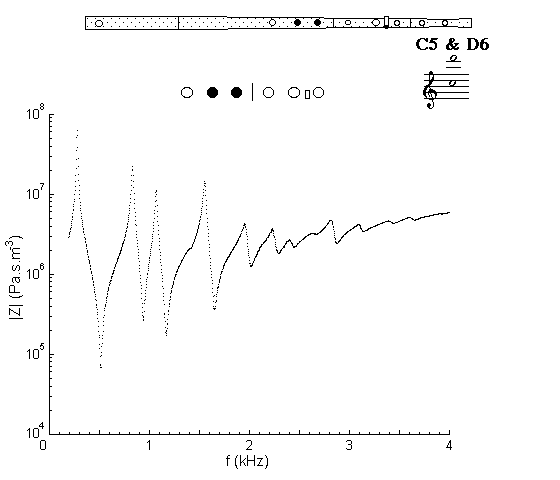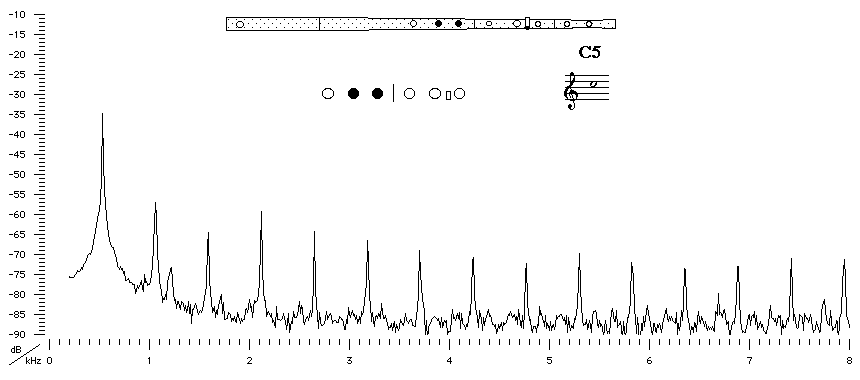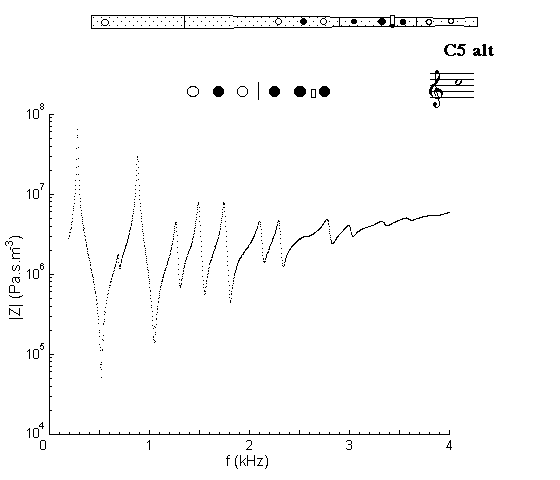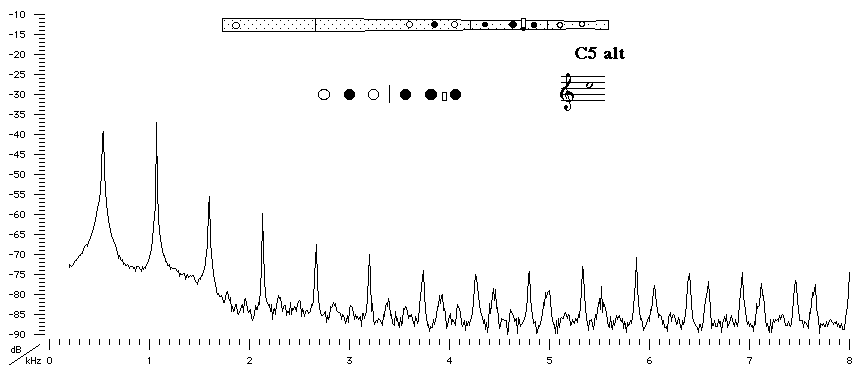| Acoustics of baroque, classical and modern flutes |
classical flute
|
C5 |

|
Acoustic and Fingering Schematic Non-specialist introduction
to acoustic impedance |
This fingering is a cross fingering: the first hole is open (as for C#5) but the two closed holes downstream increase the end effect and lower the pitch to C5. The higher minima are not at harmonics of the fundamental, so the higher harmonics in the sound spectrum are relatively weak. This gives it a dark timbre. Although variations in timbre on adjacent notes is considered undesirable on a modern flute, designed to play in all keys, this variation is often considered desirable in classical or folk instruments, especially when playing in G major.
This fingering is also used for D6, which is the third minimum (the second is unplayable).

Sound spectrum
of a classical flute with a flared foot played using conventional
fingering for C5.
![]()
![]()
![]()
![]()
![]() You can hear C5
played with conventional fingering
by Geoffrey Collins.
You can hear C5
played with conventional fingering
by Geoffrey Collins.
Alternative Fingering |
classical flute flared foot |

|
Acoustic and Fingering Schematic Non-specialist introduction
to acoustic impedance |
This alternative fingering is mainly used for the trill C5-D5.

Sound spectrum of a classical flute with a flared foot played using alternative
fingering for C5.
![]()
![]()
![]()
![]()
![]() You can hear C5
played with alternative fingering
by Geoffrey Collins.
You can hear C5
played with alternative fingering
by Geoffrey Collins.
| Acoustic measurements are available for these flutes - modern B, modern C, classical C, classical D, classical flared, baroque Sound clips are available for modern B, classical flared and baroque |
To compare flutes, it is easiest to open a separate browser window for each instrument. |